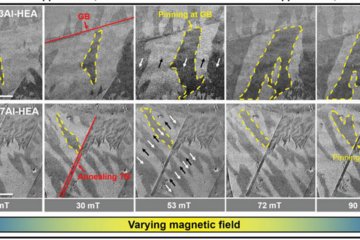All genres
1.
Journal Article
Effect of hydrogen and oxygen plasma treatments on the electrical and electrochemical properties of zinc oxide nanorod films on zinc substrates. Electrochemistry Communications 13 (8), pp. 837 - 839 (2011)
2.
Journal Article
Single Molecule Desorption Studies on Immobilized Nanoclay Particle Surfaces. Langmuir 26 (11), pp. 8155 - 8160 (2010)
3.
Talk
Linking Stability Studies to the Preferential Growth of ZnO. TACC2008, Shanghai, China (2008)
4.
Talk
A combined experimental-computational approach: Revealing the organosilane to zinc oxide binding mechanism. Euradh 2008 - Adhesion '08, St Catherine's College, Oxford, UK (2008)
5.
Talk
Adsorption of Organosilanes on ZnO Surfaces. 2nd IMPRS-SurMat Workshop in Surface and Interface Engineering in Advanced Materials, Ruhr-Universität Bochum, Germany (2008)
6.
Talk
Combining Monte Carlo Kinetics and Density Functional Theory to simulate Temperature Programmed Desorption. American Vacuum Society 54th International Symposium, Seattle, WA, USA (2007)
7.
Talk
A Monte Carlo - DFT Study: Adsorption of organosilanes on polar ZnO(0001) surfaces. 43rd Symposium on Theoretical Chemistry, Saarbrücken, Germany (2007)
8.
Talk
Adsorption of organosilane molecules on polar ZnO (0001) surfaces. ECASIA 2007, 12th European Conference on Applications of Surface and Interface Analysis, Brussels-Flggey, Belgium (2007)
9.
Conference Report
EXAFS investigations of functionalized ZnO(0001) surfaces. 5th DELTA User-Meeting, Dortmund, Germany, November 25, 2009., (2009)
10.
Poster
Adsorption of Organosilanes on ZnO Surfaces. 2nd IMPRS-SurMat Workshop in Surface and Interface Engineering in Advanced Materials, Ruhr-Universität Bochum, Bochum, Germany (2008)
11.
Poster
Adsorption of organosilane molecules on polar ZnO(0001) surfaces. 12th European Conference on Applications of Surface and Interface Analysis (ECASIA'07), Brussels, Belgium (2007)
12.
Poster
Monte Carlo Simulation of Temperature Programmed Desorption Including Binding Energies and Frequency Factors Derived by DFT Calculations. 43rd Symposium on Theoretical Chemistry, Saarbrücken, Germany (2007)
13.
Thesis - PhD
Synthesis, Characterisation and Functionalisation of ZnO Nanorods on Metals. Dissertation, Fakultät für Maschinenbau der Ruhr-Universität Bochum, Bochum, Germany (2010)











